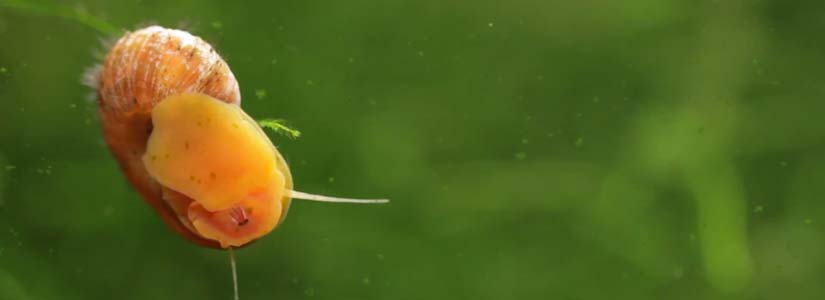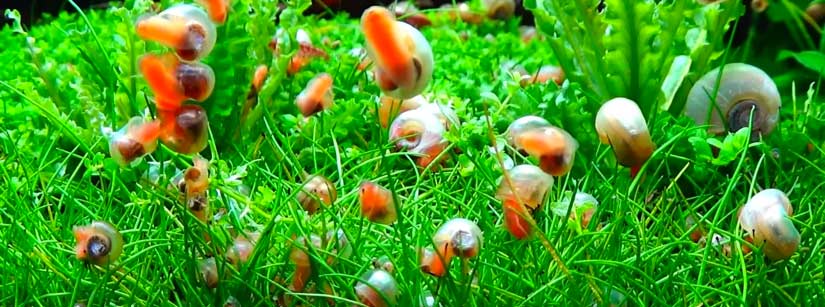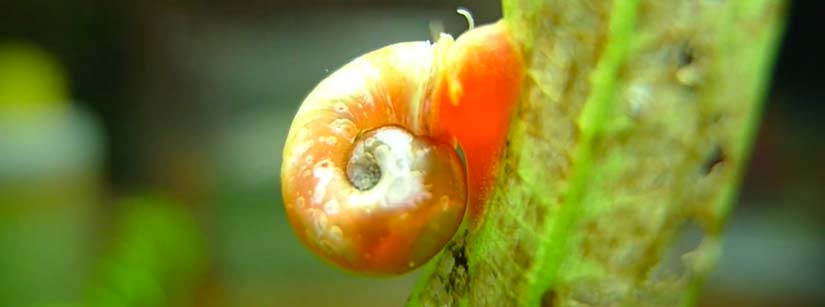

Ramshorn Snails are a very common species of freshwater snail. They are frequently seen as pest due to their fast growing populations that can be difficult to keep under control. Ramshorn snails are distincly bright orange in color. Their shells are often translucent with their slippers a solid orange coloration. Ramshorn are also bred in blue, red and brown colors, however these are far less common.
Ramshorns pose a minor threat to planted aquariums. Ramshorn snails are omnivorous and will consume plants and food meant for other invertebrates. Any excess food should be removed from the tank as to not encourage population outbreak. They will compete with other beneficial snails and shrimp for food, potentially starving them if their populations become too large.

Ramshorn Snails species can be classified into three main size groups. Species such as Gyraulus albus or 'White Ramshorn Snail' only grow up to 1/3 of an inch in size. At the opposite end of the specturm Planorbarius corneus 'Great Ramshorn Snail' can grow to almost 1 1/2" in diameter.
Ramshorn Snails will lay batches of eggs around the aquarium. They can be seen with the naked eye and should be removed. Removing the eggs from the aquarium is not a viable way of eradicating the problem. Ramshorn snails will lay eggs on plants, substrate and hardscape. This makes it nearly impossible to completely remove this snail.
An effective method in removing Ramshorn Snails includes baiting the snails. Blanched vegetables or large pellets should be placed in the aquarium at night. Early in the morning the Ramshorn snails can be easily harvested and disposed of.

Ramshorn snails do receive a bad reputation, but in smaller numbers they can aid reducing aquarium nitrates. The main problem with Ramshorn snails is their ability to reproduce so rapidly. By ensuring not to overfeed the aquarium it can aid in slowing their development and keeping populations under control.
